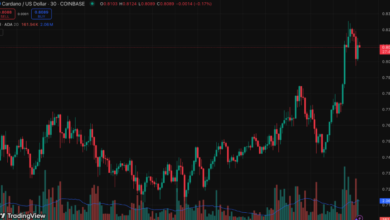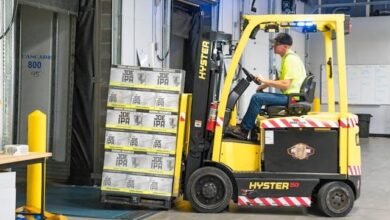Safe Harbors That Maximize Your Rental Expense Deductions

If you own rental properties, understanding safe harbors can significantly enhance your tax strategy. These provisions offer practical ways to maximize your expense deductions and streamline your tax filing process. Whether you qualify for the Small Taxpayers Safe Harbor or the De Minimis Safe Harbor, knowing your options is crucial. But how do these safe harbors work, and what can they really save you? Let’s explore the details.
Understanding Safe Harbors for Landlords
When you’re managing rental properties, understanding safe harbors can significantly ease your tax filing process.
The safe harbor election for small taxpayers allows you to deduct maintenance expenses if your building’s value is under $1 million and total income is under $10 million.
You might also benefit from the routine maintenance safe harbor, which lets you classify regular maintenance costs as operating expenses without any caps on income or property value, provided they don’t improve the property.
Additionally, thede minimis safe harbor permits you to deduct items costing under $2,500 each without classifying them as capital expenses.
See also: Building Strong Financial Models for Business Stability 3510731378
Benefits of Utilizing Safe Harbors
Utilizing safe harbors can significantly streamline your tax filing process, allowing you to focus more on managing your rental properties.
One major benefit is the de minimis safe harbor election, which lets you deduct certain expenses under $2,500 per item without classifying them as capital expenses. This means you can avoid the hassle of tracking and depreciating smaller purchases, saving you time and potential errors.
Additionally, safe harbors reduce your risk of IRS penalties by ensuring compliance with tax regulations. They also simplify your documentation requirements, enabling you to maintain clear records of allowable deductions.
Small Taxpayers Safe Harbor Explained
The Small Taxpayers Safe Harbor is a valuable option for landlords managing properties valued under $1 million and generating less than $10 million in annual income.
This provision allows you to deduct all annual maintenance expenses as operating expenses, simplifying your tax filing process. By choosing this safe harbor, you can significantly reduce your taxable income without the hassle of capitalizing expenditures.
To take advantage of this, you’ll need to maintain thorough documentation of your expenses and attach an election statement to your federal tax return each year.
Routine Maintenance Safe Harbor Overview
If you’re looking to simplify your tax filing process, the Routine Maintenance Safe Harbor might be the perfect solution for you.
This safe harbor lets you categorize routine maintenance expenses as operating expenses without facing income or property value limits. By using this safe harbor, you won’t need to worry about whether your expenses improve the property’s value, as it only applies to routine tasks like repairs and upkeep.
This means you can maximize your deductions effortlessly, keeping more money in your pocket. To take advantage of this safe harbor, just make sure to keep thorough records of your maintenance costs.
It’s a straightforward way to streamline your taxes while ensuring compliance with IRS regulations.
De Minimis Safe Harbor Details
While managing rental properties, you might find the De Minimis Safe Harborparticularly beneficial for handling small expenses.
This safe harbor allows you to deduct expenses of $2,500 or less per item without classifying them as capital expenses. It simplifies your tax reporting by letting you treat these small purchases as immediate deductions instead of spreading them out over several years.
However, be cautious if you’re spending more than $2,500 on a single item, you can’t split the cost into smaller amounts to qualify.
To take advantage of this, keep accurate records and receipts for all your small expenses. This can save you time and potentially reduce your overall taxable income at tax season.
Making a Safe Harbor Election
Taking advantage of safe harbors, like the De Minimis Safe Harborfor small expenses, is just one way to simplify your tax process.
To make a safe harbor election, you’ll need to attach a statement to your federal tax return. This statement should include your name, address, Taxpayer Identification Number, and a clear election statement.
Remember, your method of accounting won’t change; you’ll still file expenses as miscellaneous on Schedule E.
It’s crucial to keep thorough documentation of your rental property expenses to qualify. Make sure to include your election statement each year, and don’t hesitate to consult a certified tax professional or the IRS website for the detailed procedures you need to follow.
Tax Responsibilities for Rental Properties
Understanding your tax responsibilities for rental properties is essential for ensuring compliance and optimizing your financial outcomes.
You’ll need to manage several taxes, including property taxes based on your rental property’s assessed value and income taxes on the rental income you receive. If your rental activity qualifies as a business, you might also face self-employment taxes.
Additionally, be aware of potential capital gains taxes when you sell the property. Keeping accurate records of all income and expenses is crucial for maximizing your deductions and minimizing tax liabilities.
Staying updated on tax laws and regulations affecting landlords will help you navigate your responsibilities more effectively, so consider consulting with a tax professional to ensure you’re on the right track.
Cost Segregation as a Tax Strategy
Cost segregation can be a powerful tax strategy that allows you to accelerate depreciation on your rental property. By breaking down your property into various components, you can reallocate costs to shorter depreciation schedules, which can lead to significant tax savings.
This means you can claim larger deductions in the early years of ownership, improving your cash flow. To implement this strategy effectively, you’ll typically need a detailed engineering study to identify and classify your property costs accurately.
While it may involve upfront expenses, the long-term tax benefits can outweigh these initial costs. Overall, cost segregation helps you optimize deductions and manage your tax liability more efficiently.
Staying Compliant With Tax Regulations
While navigating the complexities of rental property ownership, it’s crucial to stay compliant with tax regulations to avoid costly penalties and audits.
Make sure you keep accurate records of all income and expenses related to your rental properties. This includes receipts for repairs, maintenance, and any deductions you plan to claim.
Familiarize yourself with safe harbors that can simplify your tax filings, like the Small Taxpayers Safe Harbor or the De Minimis Safe Harbor.
Additionally, consult a certified tax professional to ensure you’re following current laws and maximizing your deductions.
Regularly review IRS updates and guidelines to stay informed about changes that could impact your tax obligations.
Staying compliant not only protects your finances but also ensures peace of mind.
Maximizing Your Deductions Using Safe Harbors
Incorporating safe harbors into your rental property strategy can significantly boost your tax deductions and simplify your financial management. By understanding the Small Taxpayers, Routine Maintenance, and De Minimis safe harbors, you can make informed decisions that benefit your bottom line. Remember, proper documentation is key, so keep your records organized. With these strategies in place, you’ll not only maximize your deductions but also stay compliant with tax regulations, making your landlord experience smoother and more profitable.





